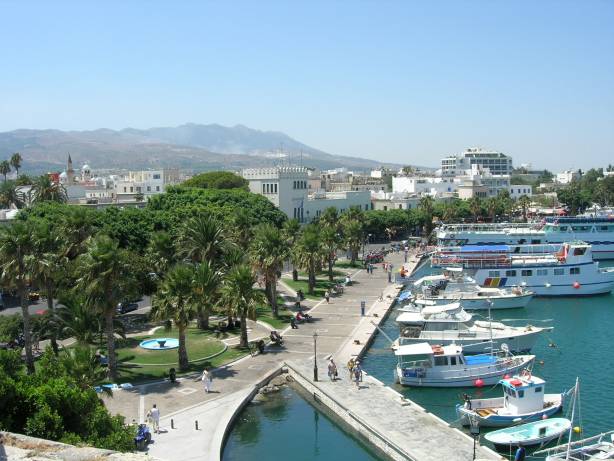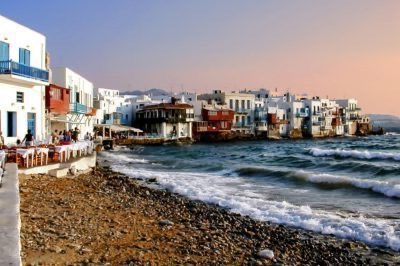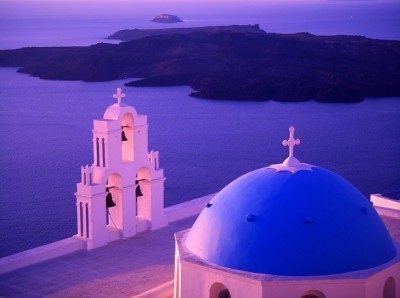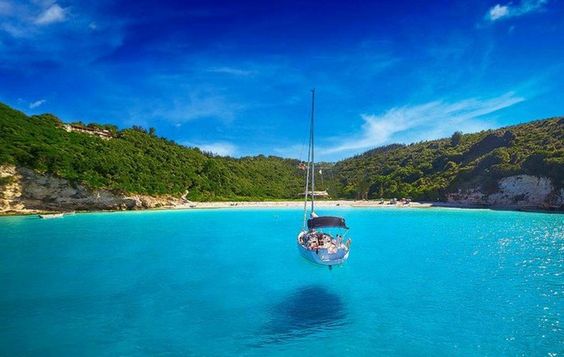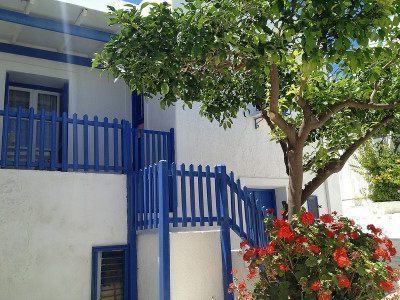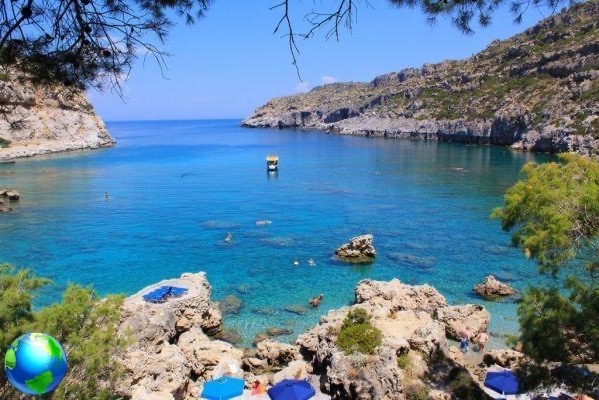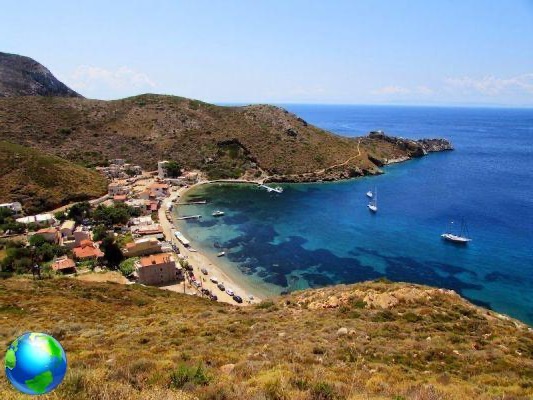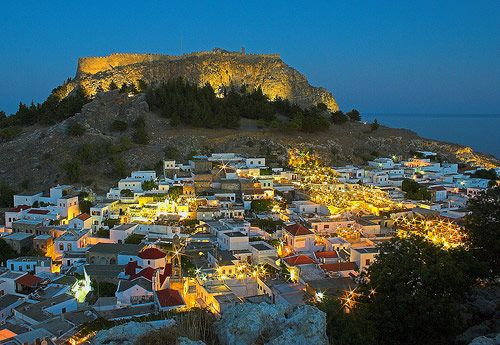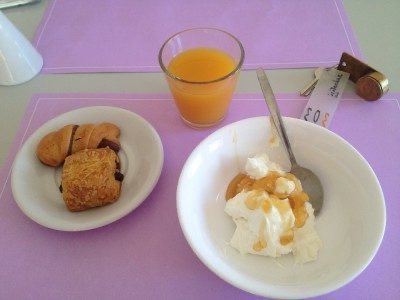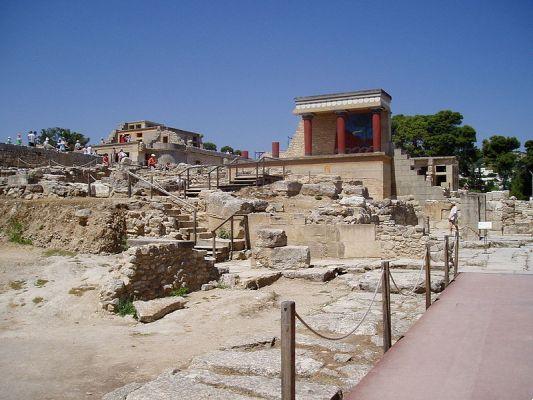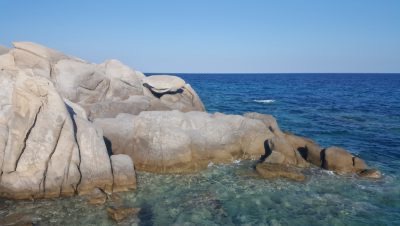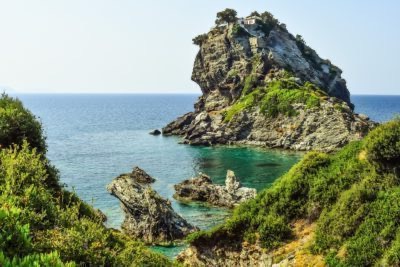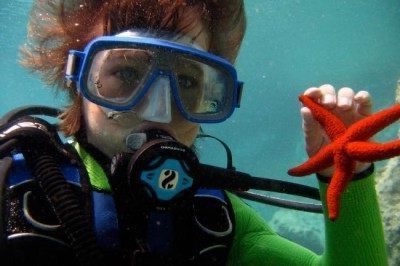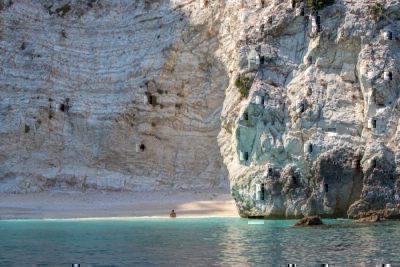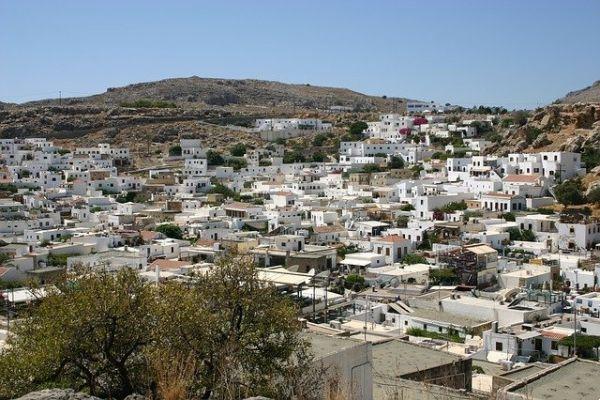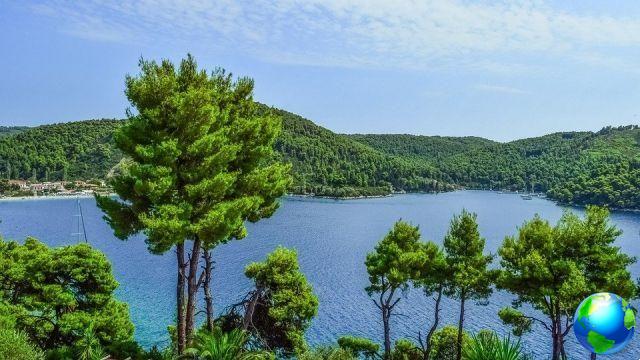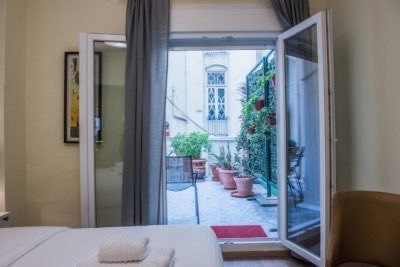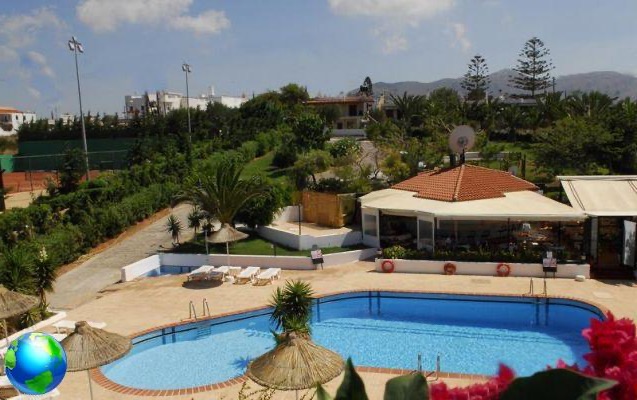
Tour Cefalonia
The choice of Kefalonia as a destination for our holiday it was completely random and strategic: the intermediate position between Zakynthos, Lefkada e Ithaca it would have allowed us to shoot on more islands.
Also browsing the internet in search of information and itineraries we fell in love with the island still unknown to most.
We decided to bring ours machine as rumors had assured us that gasoline was cheap: we did well to bring the car because you have to move a lot, but on the island of Kefalonia the average gasoline is 1.56 euros, on the island of Lefkada or on land it cost a little less, but not as expected.
We boarded at 13:30 on 07-08-2010 ad Ancona and we landed at Patras the next day at 11:30.
We drove about two hours to reach the port of Kilini where the ferry was waiting for us Poros.
America Coast to CoastThis port is tiny and not properly signposted, we found it by pure chance, even if it is the connection point with Kefalonia.
We face a very rough sea and in about an hour and a half we land in Poros.
Having not booked any rooms before leaving, we head towards Sami looking for accommodation: our attention was focused on Sami o Aghia Efimìa as they are centrally positioned with respect to all the other towns on the island.
Sami disappoints us, perhaps thanks to the tiredness after 30 hours of travel, but we do not find anything convenient and people also treat us with a lot of disdain.
Disconsolate we move to Aghia Efimìa which is five minutes away by car and after a bit of research we find an apartment in a street behind the port, at the hotel Logaras: the owner was really available and the price quite reasonable (45 euros for a small apartment and 55 euros for a large apartment) quick shower and immediately out to discover the port village: it is all developed along the road that runs along the port where we there are countless clubs, but it has a very particular charm: everything flows calmly and without the worry of the tourist towns, you can savor the true Greek style.
The next day we leave early because a visit to the north of the island awaits us: the first goal is Fiskardo.

Along the way we stop at the viewpoint above the beach of Myrtos: a breathtaking view of an equally spectacular beach: unfortunately early in the morning it is still in the shade, the ideal would be around 11 in order to see the turquoise color that characterizes it.
We arrive at our destination: the village has completely kidnapped us, it is a corner of paridiso, off the usual routes.
The vases of the houses full of pink and fuchsia colored flowers, the crystalline bay, the remains of a Roman tomb near the sea, an infinite number of taverns, bars and shops along the marina.
It remained as it was before the earthquake, in Venetian style: it is the only village that was saved from the destructive earthquake that hit the island in 1953.
Portugal and Andalusia Tour
Da Fiskardo we go back towards the peninsula of Assos: along the road we follow the signs for the beach of Embolism and we remain open-mouthed in front of so much beauty.
A small bay full of trees and vegetation close to the crystal clear water; just as beautiful but much more impressive is the beach of Aliates, which can be reached from a small road right in the center of Manganos: there are cliffs that plunge into the sea and a tiny strip of sand.

We resume the road to the peninsula of Assos: at the intersection we stop at the belvedere which offers us the view of steep walls that plunge.
We go down along tight hairpin bends and park outside the village: here too the houses and cafes are all along the small port on an emerald green bay, we also find some dilapidated houses, a memory of the past!
The peninsula is dominated by the ruins of the castle of Assos: you can get there on foot along a road that climbs for 1,8 km.
I had read that it is not worth it, but we decide to evaluate it for ourselves: in reality it is not really worth it! On 10 August we decide to go to the beach of Myrtos hoping not to find the rough sea.
We go down the dangerous road with many hairpin bends and settle on the beach: at 8 in the morning it is completely deserted because it is still in the shade, but above all because life in Greece does not start before 10.
Around 10:30 am begins to see the comings and goings of cars that completely saturate the parking available.
Unfortunately the sea is very rough, but we try to swim anyway: the waves are deadly and it can also be dangerous because they throw towards the bottom, which is made of stones (I got a very painful stone on my foot !!).

The turquoise color, from below, cannot be appreciated well, and I honestly think it makes more impression from above than from the shore, but they are tastes!
After the beach we head towards Karavomilos, immediately attached to Sami: along the road we see the signs for the monastery of Theme and we decide to take a leap.
Too bad that we get lost several times along the road due to the absolute lack of signs: in the end we manage to find him, surrounded by cows e calves, but it is closed.
Disappointed we go down from the mountain, and we go to see this geological phenomenon a Karavomilos: it is a water siphon that sinks into the land north of Argostoli, Katavothres, and flows here into a pond adjacent to the sea; a paddle wheel signals the slow movement of the current.
The same water also passes inside the cave of Melissani: the cave can be visited by boat (9: 00-19: 00), from 10 seats but spending 7 euros for a 15-minute tour seemed a bit excessive, even if the show it offers is truly sensational.

There is a blue-turquoise water mixed between sweet and salty, on which the sunlight is reflected because the roof of the cave has collapsed: different plays of color are created according to the time of day you go.
Still wanting the sea, we move to the beach of Andisamos, which can be reached by heading towards the old one Sami: from above you could see many cars, but the pebble beach is very long and the people are well distributed, plus there is a large parking lot of land available.
It is the only sea in which we dived to observe the fish and we actually found them: a myriad of colorful minnows and steep bottoms.
We make another stop at the old Sami, the archaeological site on the hill just above the new one Sami: as usual there are not many explanatory signs but the scenery is really suggestive and there are some spectacular olive trees.
Now tired we go home and for dinner we taste the first pita: we choose a place on the harbor, the Grill House, and we enjoy our dinner at an absolutely absurd price: 2.20 euros each! On 11 August we are preparing to visit the south-east of the island.
The first stop is Tzannata and the Mycenaean tholos tomb: a truly enveloping place, and a very well preserved and valued historical testimony. It is the largest and most well-preserved Mycenaean tomb in the Western Greece. Admission is free and the lady we found on the spot also speaks Italian.
We had no idea to stop at Poros to see the cave of Drakena, but the lady advised us not to go as it cannot be visited and all the finds found are kept at the archaeological museum in Argostoli.
We continue towards Scale, where we go to see the remains of a Roman villa, from the 2nd century BC: here too the entrance is free and it is absolutely worth it because the mosaics on the floors are nothing short of wonderful and very well preserved; there is also a very helpful guide.

In the throes of heat attacks (in the south it is much hotter than in the north despite being a small island) we go down to the beach and choose that of Kaminia, where the turtles go to nest: obviously we have not seen any and after a refreshing bath we leave for our tour.
Along the way to heavy, we stop at the church of Madonna a Markopoulos, erected on the site of an ancient convent: according to tradition on August 15, the feast of the Ascension of the Virgin, harmless snakes appear in the church with a cross on the back of the head, which are shaken and are a good omen; custom has it that they protect the island from earthquakes.
Legend has it that during a pirate attack on the convent, the nuns who resided there, prayed to be transformed into snakes to prevent them from being taken prisoner; their prayers were answered.
We continue the journey passing through Lourdas (it takes a very long time), but we don't stop at the beach because it is very narrow and chaotic and we continue for heavy.
To go down to the beach there are no indications except in the vicinity of the village; we decide to go from here because it is the point from which the ferries leave for Zakynthos and we need information: there is only one bar within 10 kilometers, and it does not sell tickets for the ferry.
These must be bought at the time of boarding.
Lunch time is approaching and we ask where to eat good fish: a gentleman directs us to the port of Spartia, unfortunately there are no road signs and we get there by intuition.
The place is called WaterWay: the food is very good but we expected a little lower prices.
After the meal we go down to the beach there under the cliffs: the bay is very nice but at 17.30 it is already in the shade so it is advisable to go there in the morning.
The next stop is Argostoli: we decide to stop even if we will return calmly; the pedestrian center is really nice, there are many shops, bars and restaurants; there is also a Catholic church where mass is celebrated in Italian on Sundays and adjacent to the museum dedicated to the massacre of the Aqui division.
We stop to talk to a man in charge of the museum who tells us a little about the story of the massacre and gives us information to reach the altar dedicated to the division.
The inhabitants of Argostoli and the Spaniards themselves on vacation will not be able to help you find the monument and unfortunately there are few indications.
On 12 August we decide to dedicate ourselves to Argostoli and the peninsula Paliki.
We arrive at Argostoli and immediately we start looking for the memorial: it is located on a hill and the place is of a sacredness and total respect, it seems to go back in history and in feelings; a little further along the road there is also the pit, where the officers were shot, but unfortunately it is privately owned and the Italian state has not been able to pay homage to this second place (I recommend watching the film "Il mandolino del capitan Corelli "Inspired by these events).
The second stop is at the archaeological museum, where all the artifacts found in the various Mycenaean tombs of the island and others are kept; it is small but very well done. We continue the walk to discover the alleys, shops and glimpses of the sea.

Kefalonia beaches
We leave for Lixori, but we decide not to stop and go directly to find a particular place to have lunch, Mantzavinata.
The beach is called Agios Nicholaos Belly and is presented by a cute crocodile and kangaroo danger sign. We arrive at the restaurant Spyros Antonellos, very nice place, with tables and chairs on the sand, covered by dry palm leaves and close to the sea. The beach below doesn't deserve much but the place with its simple dishes takes you back in time and leaves a sense of calm.
For the beach we decide to go to Xi: we didn't know how to expect this beach di clay.
We arrive and we are literally dumbfounded: a beautiful brown sand "burnt sienna" and a whole series of overhanging clay cliffs.
The beach is very long and you can take beautiful walks, but you have to pay attention to the pieces of cliff that come off because they are very crumbly.
Do not be scandalized if along the walk you meet green men and women, they are there to get theirs wraps of clay and it is a good excuse to then dive into the water.

La beach has many Skills, there are bathing concessions, spaces to play and the possibility of doing water sports: moving away a little from the center of the expanse you can also find calm and solitude.
After some relaxation we decide to move to the Petani beach, to enjoy the sunset, and visit other destinations during the trip.
The first one we stop at is the monastery of Pain relief: a structure overlooking the sea; from the terrace, as well as a spectacular view, you can enjoy the lapping of the waves breaking on the cliff; it is a return to nature.
Continuing we arrive at the beach platia Amos, also known as the 300 steps; to get there you have to go down a dirt road with several bends and furrows, so be very careful. At the end of the road there is a large square, where it is possible to park.
Our laziness did not allow us to go down all the steps and we were left to admire the transparency and colors from above: it is definitely worth going down.
We leave for our destination, Farmer: finding the road was not easy from where we came from, from the south, but by asking the village elders we managed to find it.
Unfortunately there are no panoramic terraces along the road that goes down as per Myrtos, to be able to enjoy the beauty of the colors: we go down directly and we are a bit disappointed; the pebble beach seems a bit left to itself despite the fact that there are bars and facilities for renting umbrellas; not even the sunset was so spectacular because there was no cloud in the sky and there were few plays of color.

August 13th we take it as a day to recharge: we have covered many kilometers and we decide to relax in a cove along the road that connects Aghia Efimia to Sami and we take the opportunity to fish a little: do not bring fishing rods to Kefalonia, because the fish along the coasts is absolutely absent and you do not listen to the local advice to fish with feta and bread (maggots are nowhere to be found!).
On August 14th we have to change rooms because we have decided to extend our stay in Kefalonia, without going to Lefkada, as we had thought before leaving, and fortunately we do not have to change the structure because the nice owner has taken steps to find the solution.
In the early afternoon we leave for the plain of You're done, under the mountain It is us.
Let's go first to visit the fortress of St. George: admission is free, the remains are beautiful, but the fortress is overall little valued because there are no guides, explanatory signs and the visitor is left to himself: despite this, the view enjoyed from up there repays any disappointment, even Byron was impressed.
The time of the visit was not a good choice because there are not many shelters from the sun and we suffered a lot from the heat.
After recovering a bit, we leave for the Monastery of San Gerasimos: on August 16 there is the feast in honor of his birth and it is full of stalls and people on pilgrimage. Inside the church there is a quarry under the floor: it is the place where the saint locked himself up to mediate.
Behind the monastery is the cooperative of the Robola, where it is possible to taste and buy the Kefalonia wine: there are several varieties and one better than the other (we tasted a sweet rosé wine which was a mix between our fragolino and moscato, a delight on the palate): to buy wine it is perhaps one of the best places since the varieties there are many.
Intending to take home only Greek specialties, on the way back to Aghia Efimia, we stop at Makriotica where there is a dairy cooperative that sells the freshest feta: it arrived safely at home, after two days including the trip !!!
In the vicinity of Sami, however, we took some very delicate thyme honey from a lady who sold it on the side of the road and the producer was her husband.
On the day of mid-August there will be an excursion to the blue caves and to the beach of the wreck a Zakynthos.
We get up early to go to Pessada to board (ferries depart from heavy at 8:00 and 18:00, while they depart from San Nikolaos at 9:45 and 19:45; there is no need to book the ticket and it is done directly on the spot at the time of boarding.

The cost is € 7.50 per person and € 31 for the car and after an hour and a half we disembark at the marina of Agios Nikolaos.
We are on foot and we hope that the company we have chosen for the boat excursion is close: it is located in Head Skinari, the northern tip of the island and there are three very nice and helpful brothers who for € 15 make you do the whole tour of the blue caves and take you to the wreck beach where they leave you for an hour.
It took us about an hour on foot to get to the Capo Skinari lighthouse, (there are no services at the port for renting scooters) along secondary dirt roads and slightly uphill, but with a breathtaking view of the sea.
We arrive at the lighthouse, we pass it and we go down along the cliff where we find the Potamitis Bros and the boarding point for excursions.
Having confessed that we arrived on foot, the brothers were very kind and ensured us a ride to the port upon departure from Zakynthos.
We get into the boat and an hour of navigation awaits us among the many caves with truly crystalline water, with many corals and some with bright blue water to make the body color seem blue: we bathed in those most beautiful.
Their visit is always recommended in the morning because they are located in the north-east and in the afternoon they are in the shade.
We return to the starting point, change boat and together with a larger group of tourists we move towards the wreck beach: they leave us here for an hour to enjoy the crystalline blue sea that characterizes the bay, which has only access from the sea. .
On the beach there is the wreck of a smugglers ship which ran aground here following a breakdown: the atmosphere is truly fascinating, you can get on top of the ship but watch out for the protruding irons.
At the end of the hour the boat picks us up and takes us back to the lighthouse. We go up from the cliff and stop for lunch at the restaurant taverna To Faros, also run by the three brothers who also have two windmills with rooms to rent.
On the cliff they also set up a wooden terrace for sunbathing and it is connected to the blue grotto below by a long staircase: we spent the whole day at this fantastic, original and complete structure.
At the time of departure, as promised, one of the brothers picks us up with the boat at the bottom of the steps and takes us back to the Agios Nicolaos port: without him we would have had to walk another hour.
The last day of vacation has arrived and we reluctantly greet the very nice owner of the hotel.
We head north because it is from Fiskardo which ferries depart for Lefkada.

Along the marina there is an information center where it is possible to book the ferry ticket (tel. 2674041440), to be collected at the time of boarding but in total chaos (the cost is € 7.50 per person and € 33.50 for the car).
Before embarking we stop to enjoy for the last time the crystal clear waters at the beach of Embolism and around 12:00 we look for a place that makes us eat, before leaving.
It was very difficult because in Greece you have lunch from 14:00 to 16:00 and dinner from 21:00 until late at night: we found a place, a restaurant Lagoudera, all colorful and cute that made us happy to let us eat, luckily.
At the appointed time we head towards the boarding point: the port is really disorganized because there is a narrow street that must accommodate both the cars that go down and those that have to go up, and next to them there is a kiosk where to collect the tickets, but without there being a sense of orderly queue and then people flock as best they can.
Having survived this, the return journey begins: we disembark Vasiliki and, even here with a little luck, we manage to free ourselves from the chaos that reigns and we are going to travel the 160 km that separate us from the port of Igoumenitsa.
Tired but satisfied we settle down on the corridor of the ship and with nostalgia we start reviewing all the photos taken.
This trip was a real discovery: we left slightly hesitant about what we would find and now we return full of joy for the adventure we had experienced.
We have enjoyed places that are both wild and human, infinite spaces and small horizons, warm and glacial colors… a mix of emotions absolutely never to be forgotten.
Kefalonia photos


















